NATURE DETECTIVE
OWL PELLETS
BY BRIAN ECOTT
Many birds regurgitate the indigestible remains of their food in the form of a pellet. These little packages contain a wealth of information on their prey. Gull pellets can be found on cliff tops. Birds of prey including eagles, hawks and owls leave pellets by their nests, perches and roosts. Pellets may contain bones, fur, feathers, insects and plant materials. Owl pellets vary in size and shape and a single pellet of a Barn owl may contain the remains of 4 or 5 mice, voles or shrews. Pellets can be soaked in water and then teased carefully apart using needles and tweezers to examine what they contain.
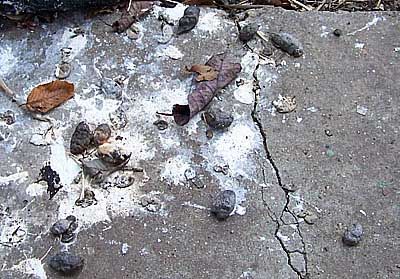
Little owl pellets and droppings (white) under a roost on the farm at Hainault Forest.
The Little owl pellets collected were typically rounded at one end and pointed at the other end up to 4 x 1.5cm. Little owl diet consists of earthworms, beetles, mice, voles, shrews, and birds. Of the 12 pellets examined, one consisted almost entirely of beetles, two others were mainly mud from the ingestion of earthworms, and the remainder contained fur, a few bones, jaw bones, teeth, but mainly beetle parts.

Little Owl pellets
The shrew jawbones contained red tipped teeth and those of both Pigmy shrew
Sorex minutus and Common shrew
S. araneus were identified.
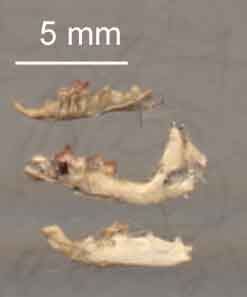
Top: Pigmy Shrew lower jaw
Bottom two: Common shrew
Jawbones of voles were found together with incisor teeth and molars. As the molar teeth contained no roots these belonged to the Field vole
Microtus agrestis.
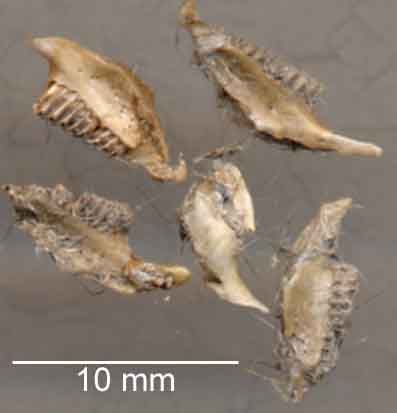
Field vole jaws
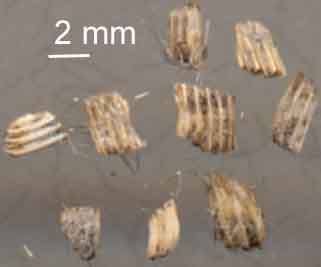
Field vole teeth
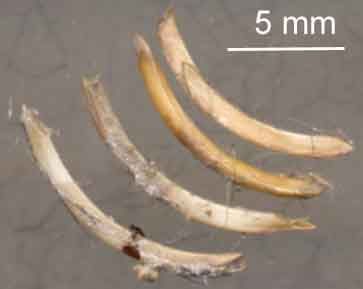
Vole incisor teeth
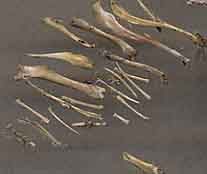
Bird & mammal bones
Legs, wings and wing cases of various beetles were found including possibly the Violet ground beetle
Carabus violaceus but these would require expert identification.
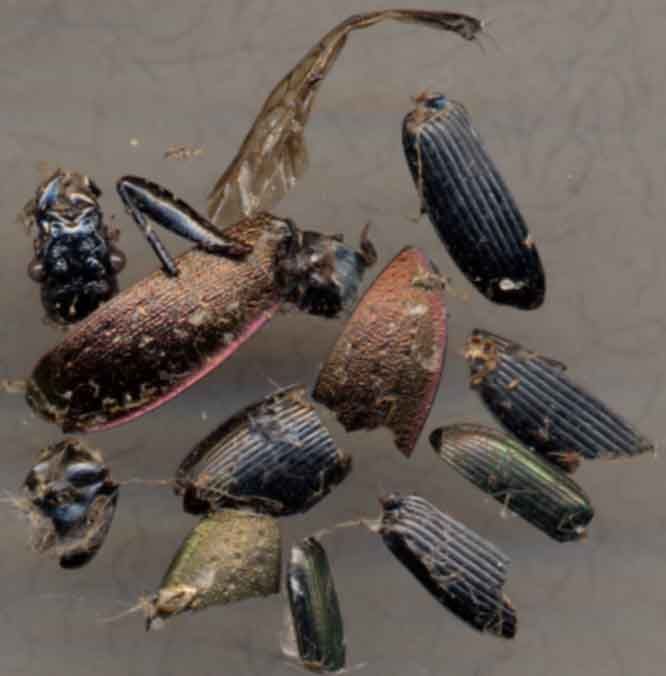
Various Beetle parts
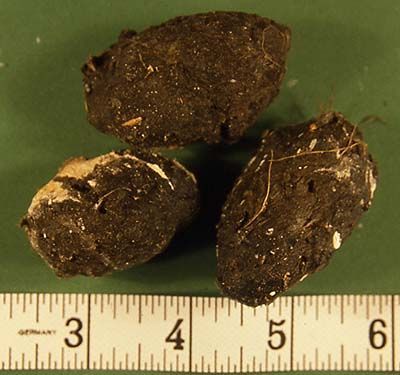
Tawny owl pellets - the scale is in inches
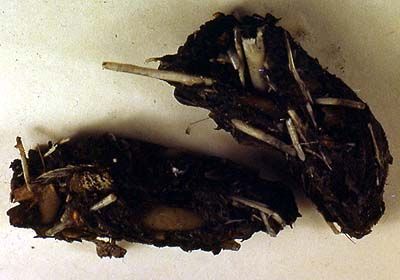
Pellet of Bird of Prey showing feather shafts
FURTHER READING
Collins Guide to Animal Tracks and Signs (1974)
by Preben Bang and Preben Dahlstrom. (Collins)
Tracks and Signs of the Birds of Britain and Europe (1999)
by Roy Brown et al. (Helm)
Mammals of Britain - their tracks, trails and signs (1973)
by M J Lawrence & R W Brown (Blandford
© hainaultforest.net. All rights reserved.

